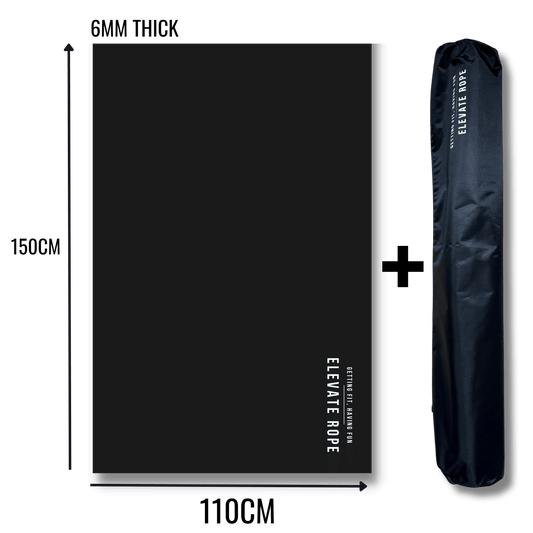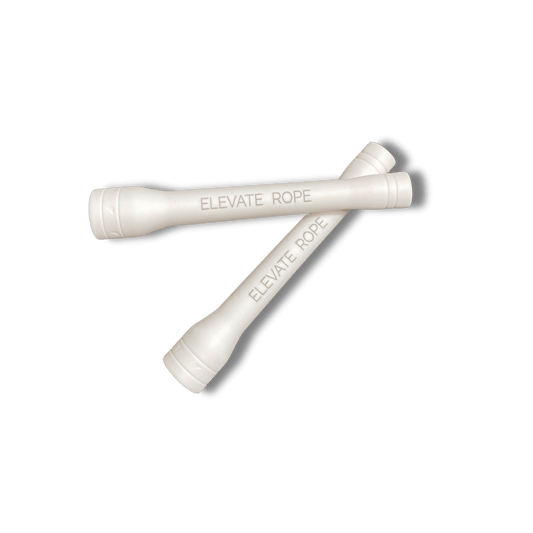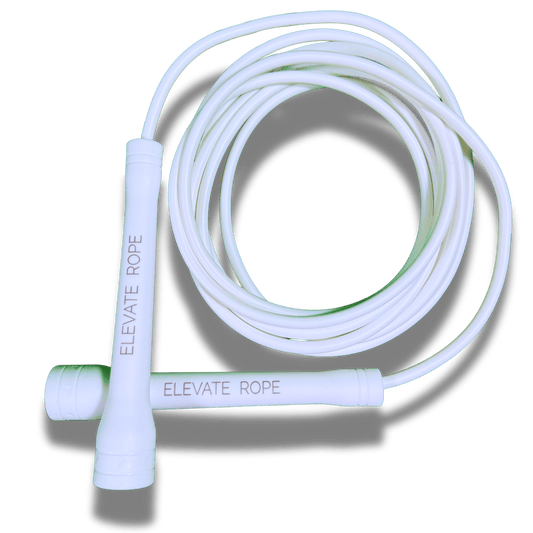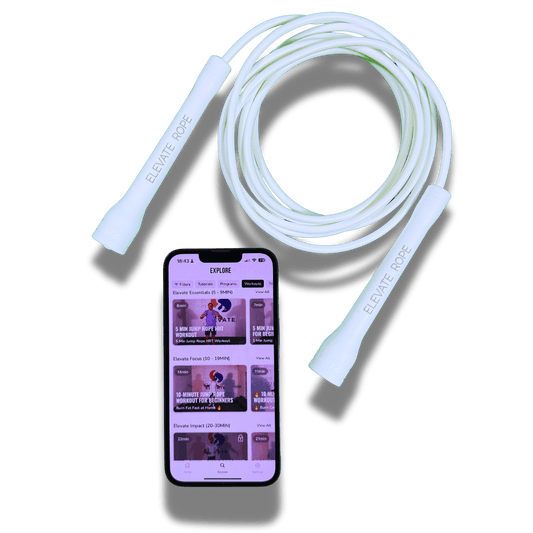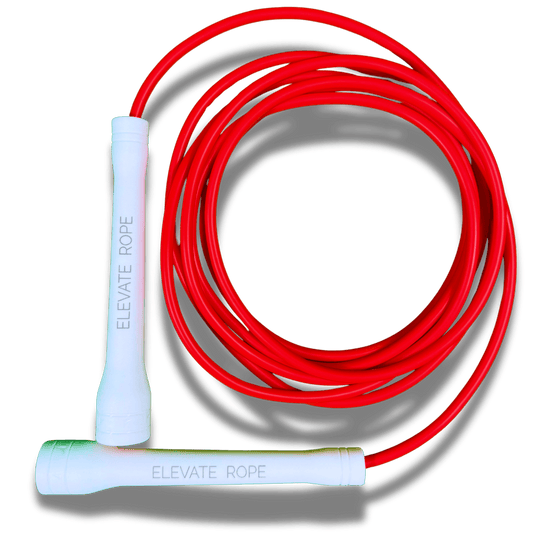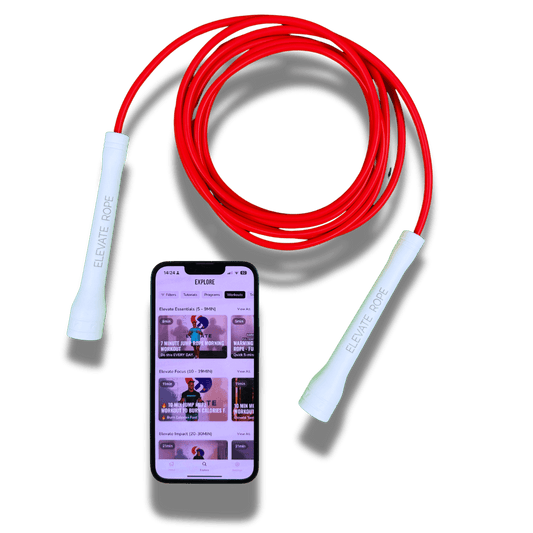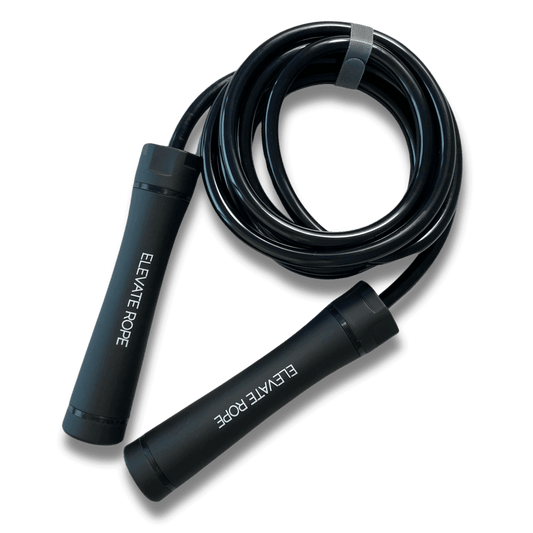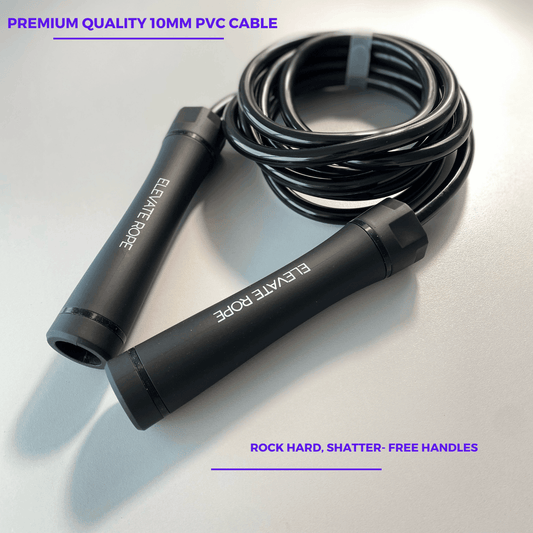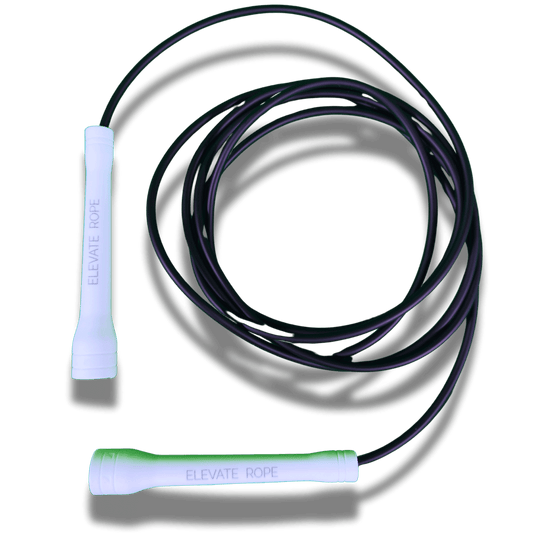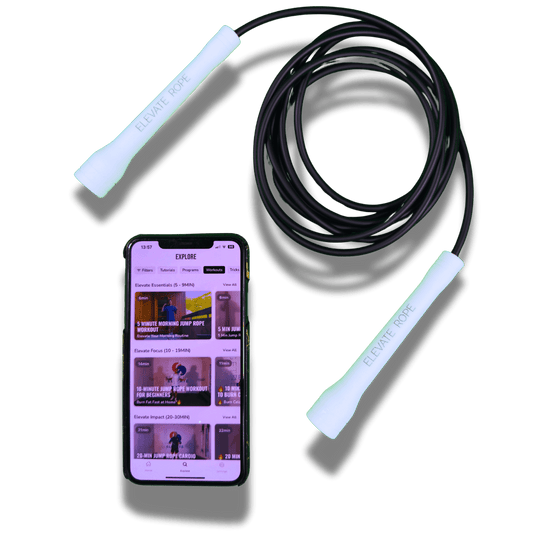If you’ve ever tried to master Double unders, you know they’re more than just a fancy jump rope trick. They demand speed, timing, rhythm, and control — and without the right equipment, they’re twice as hard (pun intended). Whether you're training for CrossFit, conditioning workouts, or just love a good challenge, the rope you choose plays a massive role in your progress.
In this article, we’ll break down why speed ropes are the best for this trick, how beginners can get started without frustration, and the key technique tips that will make every rep smoother. By the end, you’ll know exactly what to look for — and which rope will help you level up.
🏆 Why Speed Ropes Are Superior for Double Unders

Not all ropes are built the same — and when it comes to double unders, speed matters.
Speed ropes are specifically designed for fast, fluid motion. They’re made with thin, lightweight cables (often coated wire) and handles equipped with high-speed bearings. These design features let the rope move quickly and smoothly, which is exactly what you need when the rope has to pass under your feet twice in one jump.
Let’s compare:
| Rope Type | Speed Rating | Ideal for Double Unders? | Why/Why Not |
| Speed Rope | ⭐⭐⭐⭐⭐ | ✅ Yes | Fast rotation, minimal drag |
| Beaded Rope | ⭐⭐ | ❌ Not ideal | Too heavy, too slow, poor feedback |
| Weighted Rope | ⭐ | ❌ Definitely not | Built for strength, not speed |
| PVC Freestyle Rope | ⭐⭐⭐ | ⚠️ Maybe for beginners | Okay for rhythm, not optimal speed |
Bottom line? Speed ropes are the only type specifically engineered to support the high turnover, tight timing, and fluid motion that it requires.
🛠️ Beginner-Friendly Tips to Start Double Unders
If you're new to double unders, it's easy to feel overwhelmed. But don’t worry — they’re absolutely learnable. Here’s how to build a solid foundation:
1. Get Comfortable With Singles First
Before attempting, you should be able to do at least 50–100 single jumps in a row with good rhythm and posture. This builds the coordination and timing you’ll need.
2. Practice ‘Power Jumps’
These are higher, more controlled jumps without changing the rope speed. Focus on jumping 2–3 inches off the ground while maintaining a tall, relaxed posture. This simulates the height needed for double unders without the pressure of extra rotations.
3. Use the ‘One-Two’ Drill
Try this sequence: one single under, then one double under. Repeat. It helps you develop timing and lets you reset between attempts without losing rhythm.
4. Count Out Loud
Sounds simple, but counting “one-two” or “jump-jump” helps you link your breath and body to the rope’s rhythm. It improves timing and reduces hesitation.
5. Film Yourself
It’s hard to fix what you can’t see. A short video of your jumps can reveal whether your arms are moving too much, your jumps are inconsistent, or your rope length is off.
📏 Proper Double Under Form — What You Need to Get Right

Even with the best rope, poor technique can trip you up (literally). Here’s what to focus on:
✅ Posture
- Stand tall with your chest lifted and shoulders relaxed.
- Avoid hunching or leaning back — this disrupts your balance and timing.
✅ Arm Position
- Elbows should stay tucked close to your sides.
- Hands slightly in front of your hips, forming a small triangle.
- Don’t let your arms drift — it shortens the rope arc and causes tangling.
✅ Wrist Rotation
- This is where the magic happens. Your wrists — not your arms — control the rope speed.
- Use small, fast circles to whip the rope around efficiently.
- Big arm movements slow you down and kill your rhythm.
✅ Jump Height and Timing
- Double unders require a slightly higher jump than singles — but not a leap.
- Focus on quick, relaxed jumps with a soft landing.
- Time the rope to pass just as your feet leave the ground.
🔄 Why Your Equipment Makes or Breaks Your Progress
Technique and drills matter — but none of it works without the right rope. Using a beaded rope or one that’s too heavy or slow will make timing feel impossible. You’ll work harder and get more frustrated, even if your form is on point.
A high-performance speed rope removes those barriers. It moves as fast as you do, gives you feedback without drag, and supports smooth, efficient training. That’s where the Speed Rope MAX comes in.
🛠️ Meet the Speed Rope MAX — Built for Double Unders
If you’re serious about it — or want to get there — the Speed Rope MAX is the rope you need in your hands.
Why It Works:
- Ultra-light cable for lightning-fast rotations
- Precision bearings that reduce friction and boost speed
- Adjustable length for a perfect, personalized fit
- Ergonomic handles that support grip without fatigue
Whether you're a beginner working your way up or an athlete refining your double under technique, this rope delivers exactly what you need — speed, control, and consistency.
👉 Click here to shop the Speed Rope MAX
🎯 Final Thoughts
They don't come easy — but they’re absolutely achievable with the right mindset, training approach, and gear. Speed ropes aren’t just a preference; they’re a necessity when it comes to mastering this skill.
By understanding why speed ropes matter, practicing beginner-friendly drills, and focusing on proper form, you’re setting yourself up for smooth, powerful, and efficient double unders — not just for today, but for every workout ahead.
So if you’re ready to stop guessing and start progressing, the first step is simple: get the right rope.
Your double under journey starts with the Speed Rope MAX — and it starts now.
You May Also Like
1. How to Choose the Right Jump Rope Length for Your Height
2. Speed, Beaded, or Weighted? Find the Best Rope for Your Goals
3. PVC, Cable, or Beaded? How to Pick the Right Jump Rope Material
4. How to Adjust Your Jump Rope in 3 Easy Steps
5. 5 Common Mistakes Beginners Make When Choosing a Jump Rope
